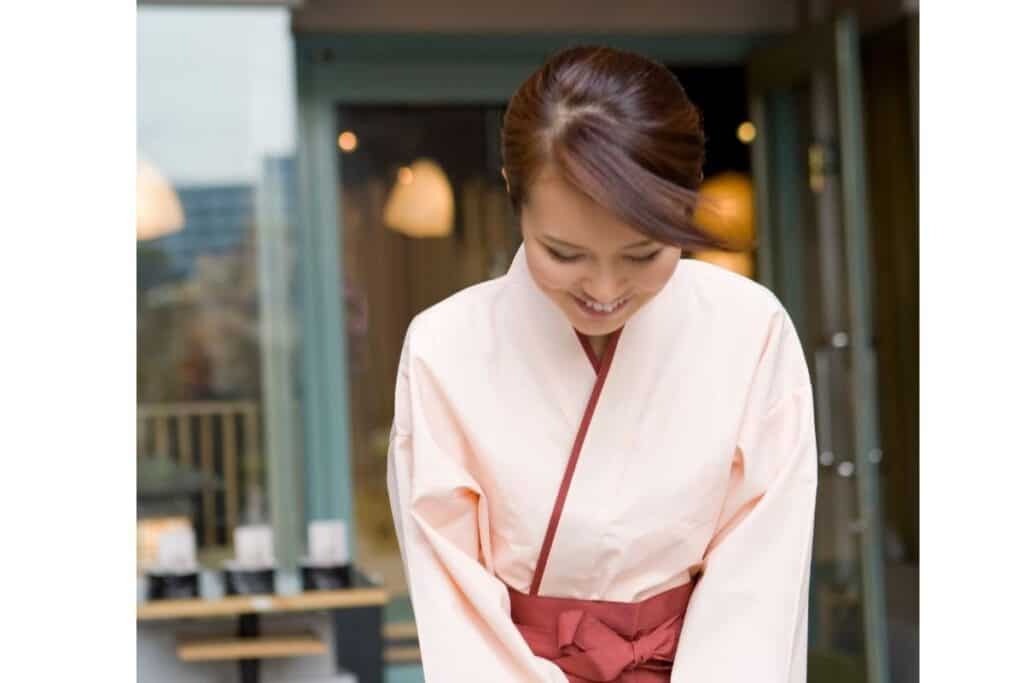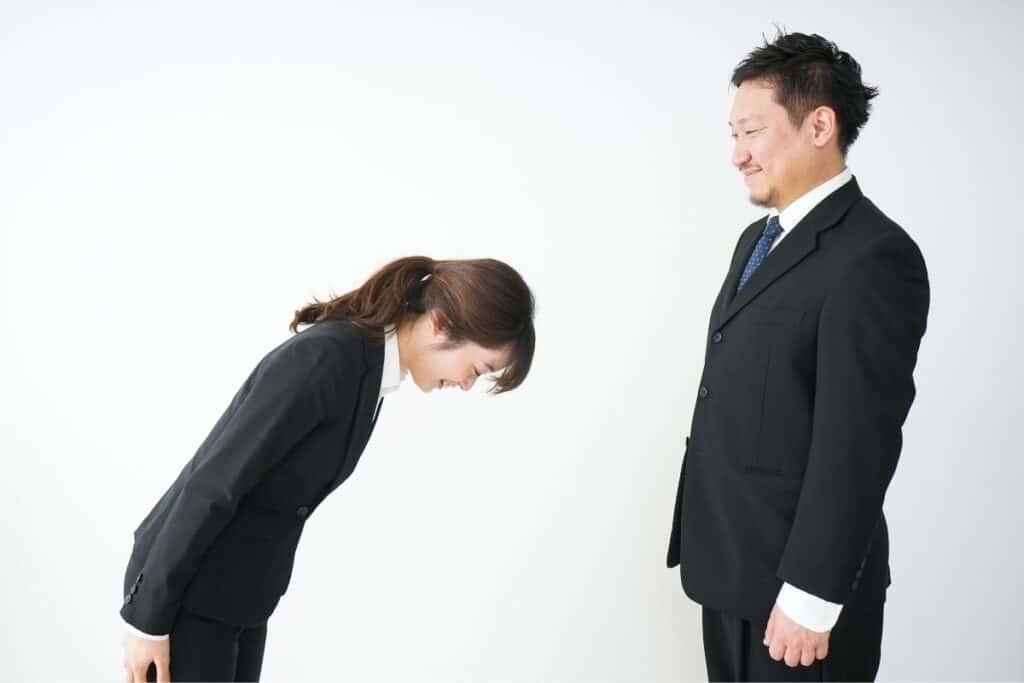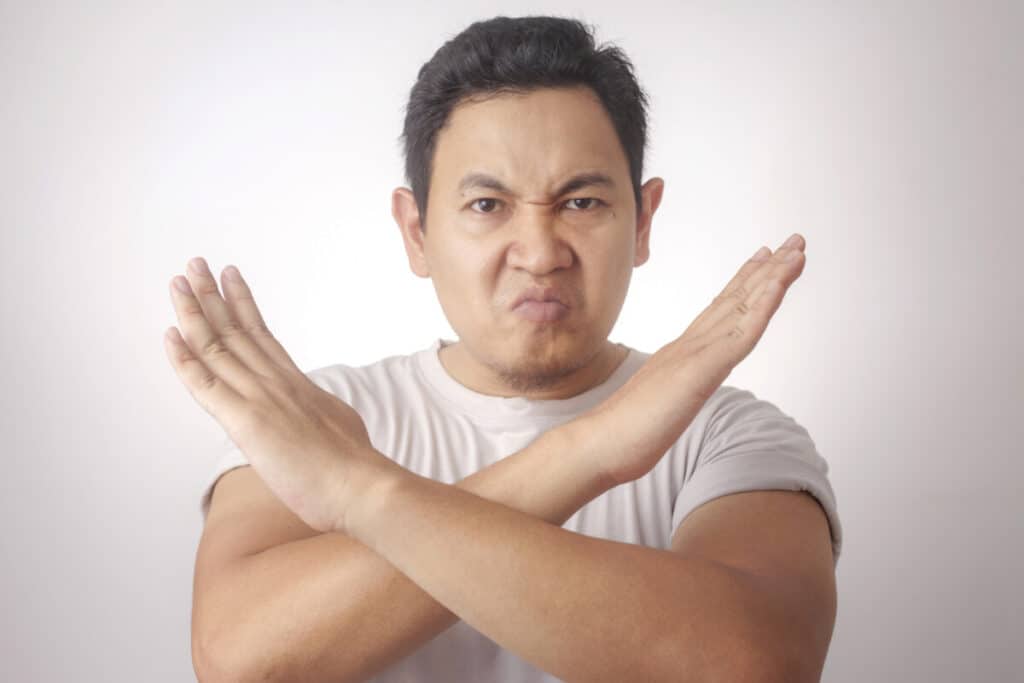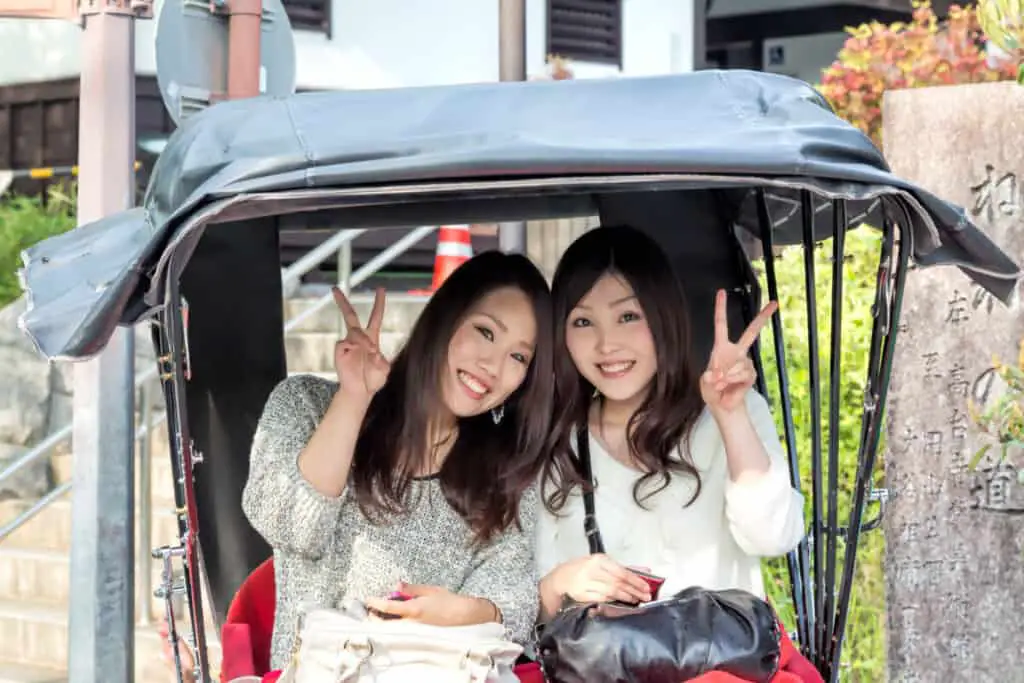Bowing
Bowing is one of the most essential gestures you must understand which form part of everyday life in Japan. There are multiple meanings to bowing within Japanese culture.
Bowing can be used as a greeting when for a friend, or even for someone you are meeting for the first time. Bowing can be used to show gratitude, to say please, thank you, and excuse me.

An ancient tradition in Japan, bowing is used instead of handshaking and is seen as a more sanitary than the western custom of handshaking.
Whether you are visiting Japan or living in Japan, bowing will quickly become a gesture that you automatically adopt in your day-to-day life.
As bowing is a sign of respect in Japan, bowing to strangers shows that you are respectful and well-mannered, whereas failing to bow can connote bad manners.
How To Bow Correctly
There is a correct way to bow, and the degree of the bow can change depending on the gesture you would like to present.
Men should place their hands down by their sides and keep them straight, while women should fold their hands in front of their bodies. Alternatively, women can place their hands flat on their thighs.

It is important that you look at the floor, bend forward from the waist, hold still in the bowing position for a second or two, and then stand up straight.
An informal bow to a friend or relative is performed at a 15-degree angle, tilting your head forward as a nod may be sufficient. A more formal bow, to a colleague or acquaintance, involves a deeper bow at a 30-degree angle.
A 45-degree bow held for three or more seconds is used when an apology is taking place or as a sign of utmost respect, including gratitude.
Yes / OK
Nodding your head as a sign of agreement or acceptance is a universal gesture for the words yes and OK. This gesture is recognized in Japan, but there is also an alternative gesture used in Japanese culture.
In western countries, you can put your thumbs up as a way of gesturing ‘OK’, in Japan to replicate this meaning you make an O shape using your arms above your head.
No
Shaking your head to indicate ‘no’ is another universal gesture that is recognized in Japanese society. You can also indicate ‘no’ in Japan by using the Japanese gesture which involves crossing your arms in front of your body in an X shape.

I Don’t Know
When in Japan, if you want to indicate that you do not know the answer to a question or that you do not understand what is being said then you wave one hand in front of your face.
The thumb should be closest to your face, with your little finger being the furthest away from the face.
It is important to remember that this gesture involves the hand moving, as it is easily confused with the gesture for excuse me.
Excuse Me
The gesture for excuse me in Japanese culture is similar to the gesture for “I don’t know”. You should hold one hand still in front of your face to gesture excuse me. The key is to not move your hand as this will indicate that you don’t know, rather than excuse me.
Talking About Yourself
If you are talking about yourself in Japan, it is normal to point towards your face, with some people even touching the end of their nose.
This gesture may some strange to many, particularly those in western countries, where placing a hand on your chest could indicate that you are talking about yourself.

Talking About Others
In Japanese culture, there is a gesture for talking about others. In some countries, you might point your finger at someone to identify that you are talking about them, but in other countries, this is considered rude and bad-mannered.
In Japan, you gesture with an open palm in front of you aimed at others, but be careful not to point your finger at others.

Beckoning
In Japan, you can gesture to someone that you would like them to come over to you by raising one hand to head height, keeping the hand stretched out with the palm facing the floor and fingers pointing towards the person you are communicating with.
While maintaining straight fingers, you repeatedly move your fingers down to point at the ground and back up again.
The Japanese beckoning gesture may have the appearance of non-natives of telling somebody to go away. In other countries, such as the USA and UK, this gesture is performed with the palm facing up rather than down.
Anger
To indicate that you are angry in Japan you clench your fists, holding them up at either side of your forehead, with both index fingers pointing towards the sky.
This gesture represents devil horns; hence it symbolizes anger. The gesture may appear confusing to westerners who will be more used to this type of gesture being used for humor and playfulness.

Counting On Your Fingers
Japanese people count on their fingers the opposite way to English-speaking countries. English speakers are used to starting with their fingers clenched into the palm and extending a finger out each time they count.
When counting on your fingers in Japan, you start with your fingers and thumb extended outwards, and bend them into your palm one at a time as you are counting.
The order starts with the thumb and ends with the little finger, which is the same order that English speakers use.

Peace Sign
The peace sign, the index and middle fingers making a V sign with the palm facing away from the body, is a universally recognized gesture.
The gesture is a sign of peace and goodwill, and can also symbolize success. Although the peace sign is acknowledged worldwide, it is rarely used in most countries.
In Japan, the peace sign is commonly used as a basic pose in photographs. It is also used as a greeting to others, especially tourists.

Gestures To Avoid
As well as learning the common gestures to use when you are in Japan, it is just as important to learn which gestures to avoid.
Using inappropriate and incorrect gestures is likely to cause offense and may lead you to get into some kind of trouble.
Looking People In The Eye
It is considered respectful and courteous in English-speaking countries to maintain eye contact in conversations, as it shows you are paying attention to the other person. In Japan, this same gesture is considered intrusive, aggressive, and intimidating.
When you are speaking to a Japanese person, do not stare into their eyes as they will feel overwhelmed, you must frequently glance to the side or the ground throughout the conversation.

Crossed Arms
Crossing your arms in Japanese culture is considered an act of hostility. If you are in public with your arms crossed then you will not have anyone approach you.
It is rude to cross your arms in the middle of a conversation with a Japanese person as they will take this gesture to mean that you do not want to talk to them.
A one-off situation when crossing your arms is considered appropriate is if you also have your eyes shut, this can how that you are deep in thought.

Arms and Legs Spread Out
In Japan, it is considered rude to use up more space than you need, particularly when you are using public transport.
I am sure we have all endured frustration at not being able to sit down on public transport because someone else has spread out across multiple seats.
While on the topic of public transport, it is also worth noting that in Japan you are expected to talk quietly on public transport, avoid talking on the phone, and always leave seating for the elderly and parents with their children.

Embarrassment
To identify that they are feeling embarrassed, or uncomfortable, in the current situation, a Japanese person will raise one of their hands to the back of their head.
If you see someone do this while in conversation with them, it is a key indicator that you should change the topic to help them feel more at ease.










